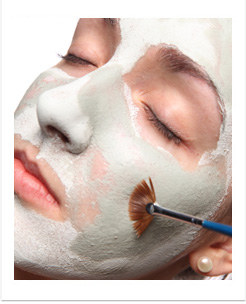SERVICES
- Allergy Screening
- Chemical Peels
- Dermapen
- Facial Skin Analysis
- FreshEyes
- Hyperhidrosis (Excessive Sweating)
- Hair Loss Treatment
- Laser Clinic
- Liquid Facelift
- Keloid Treatments
- Medical Facials
- Medical Treatments
- Mole Mapping
- Photodynamic Therapy (PDT)
- Skincare Advice
- Pigmentation Treatment
- Surgical Procedures
- Ultraviolet Phototherapy
USEFUL LINKS
 Most patients display panic when their doctors mention the word “chemical peel”. They think blistering, desquamation, scabs and a long recovery period. With all the more media coverage, people are starting to realize that there are different levels of chemical peels. Even “lunch time peels” where you can go back to work and still look radiant.
Most patients display panic when their doctors mention the word “chemical peel”. They think blistering, desquamation, scabs and a long recovery period. With all the more media coverage, people are starting to realize that there are different levels of chemical peels. Even “lunch time peels” where you can go back to work and still look radiant.
If you are considering a chemical peel, the following information will provide you with a good introduction to the procedure. For more detailed information about how the procedure may help you, we recommend that you consult a registered physician who has completed a training program that includes instruction in this procedure.
WHAT IS A CHEMICAL PEEL AND WHAT TYPES ARE THERE?
Chemical peel is the application of a chemical solution to induce a healing process in the skin. It is used to improve and smooth the texture of the facial skin by removing its damaged outer layers. A peel removes several layers of sun damaged skin cells, leaving fresh skin which has a more even surface and color. It also stimulates new collagen to be formed improving skin texture and quality. Peels may result in superficial, medium depth or deep skin injury/ peeling.
The various solutions used for this includes: Alphahydroxy acids (AHAs), trichloroacetic acid (TCA) and Phenol formulations. The precise formula used may be adjusted to meet each patient’s needs. It is helpful for those individuals with facial blemishes, wrinkles and uneven skin pigmentation.
With aging, the accumulated effects of sun exposure, pollutants, acne, and scarring can damage our skin and cause us to look older than we are. Such skin damage can be treated with a chemical peel, a non-invasive procedure designed to promote cell growth and produce smoother, clearer skin.
Chemical peels are also used to treat pigmentation, sunspots, melasma (a skin condition characterized by irregularly shaped patches of brown skin commonly found on the face and neck), and pre-cancerous changes in the skin. Chemical peels can be performed on the face, neck, chest, arms, hands, and legs. Although chemical peel may be performed in conjunction with a facelift, it is not a substitute for such surgery. Chemical peels are sometimes applied to other sites such as the hands. They may be used to treat damage caused by exposure to the sun (photo ageing), to remove pigmentation such as freckles or sunspots and fine lines and wrinkles. Chemical peels may also soften acne facial scars and even control acne. Chemical peel is most commonly performed for cosmetic reasons — to enhance your appearance and your self confidence. Therefore, most medical aids will not reimburse the procedure.
LEVEL OF CHEMICAL PEELS
1. Superficial peels
Alphahydroxy acids (AHAs), such as glycolic, lactic, or fruit acids are the mildest of the peel formulas and produce light peels. These types of peels can provide smoother, brighter-looking skin for people who can’t spare the time to recover from a phenol or TCA peel. AHA peels may be used to treat fine wrinkling, areas of dryness, uneven pigmentation and acne. Various concentrations of an AHA may be applied weekly or at longer intervals to obtain the best result. Your doctor will make this decision during your consultation and as the treatment proceeds. An alphahydroxy acid, such as glycolic acid, can also be mixed with a facial wash or cream in lesser concentrations as part of a daily skin-care regimen to improve the skin’s texture. Glycolic acid, salicylic acid and Jessner’s peels result in superficial skin injury and are well tolerated – the ‘lunchtime’ peel. Glycolic acid peels remains the gold standard of superficial peels and carry little to no risk. Salicylic acid peels are commonly used for acne patients. They remove thin lesions on the skin surface, reducing pigment and surface dryness. The result of the first peel may be disappointing, but after repeated peels, significant improvement is usually evident.
2. Medium peels
Trichloroacetic acid (TCA) is used in various concentrations, but it is most commonly used for medium-depth peeling. Fine surface wrinkles, superficial blemishes and pigment problems are commonly treated with TCA. The results of TCA peel are usually less dramatic than and not as long-lasting as those of a phenol peel. In fact, more than one TCA peel may be needed to achieve the desired result. The recovery from a TCA peel is shorter than with a phenol peel. Trichloracetic acid (TCA) is the most common chemical used for a medium depth peel. The results depend on its concentration, usually 20 to 35%. A concentration higher than 35% TCA carries a risk for pigmentation problems. The treatment is painful and treated areas are swollen, red and crusted for the next week or so. It can lead to an impressive improvement in skin texture with a reduction in blotchy pigmentation, freckling and solar keratoses (dry sunspots). Although fine wrinkles and some acne scars are less obvious, the TCA peel has no effect on deep furrows. Multiple TCA peels can also improve stretch marks significantly.
3. Deep peels
Phenol is the strongest of the chemical solutions and produces a deep peel. It is used mainly to treat patients with coarse facial wrinkles, areas of blotchy or damaged skin caused by sun exposure, deep acne scars or pre-cancerous growths. Since phenol sometimes lightens the treated areas, your skin pigmentation may be a determining factor as to whether or not this is an appropriate treatment for you. Phenol is primarily used on the face; scarring may result if it’s applied to the neck or other body areas. Phenol results in deep skin injury. It is used for facial peels in severely damaged skin only nowadays because of the risk of scarring and because of its toxicity. Absorption of phenol through the skin results in potentially fatal heart rhythm disturbances and nerve damage. However, it is very effective at improving both surface wrinkles and deep furrows. After a phenol peel, the treated skin is pale and smooth but it may be waxy and “mask-like” if to high concentration was used for your specific skin.
THE RISKS
All chemical peels carry some uncertainty and risk. Chemical peel is normally a safe procedure when it is performed by a qualified, experienced physician, dermatologist or plastic surgeon. A nurse or aesthetician (beauty therapist) may perform superficial peels. A trained physician, dermatologist or plastic surgeon usually performs deeper peels. However, some unpredictability and risks such as infection and scarring, while infrequent, are possible.
AHA peels may cause stinging, redness, irritation and crusting. However, as the skin adjusts to the treatment regimen, these problems will subside. With a TCA peel, your healed skin will be able to produce pigment as always; the peel will not bleach the skin. However, TCA-peel patients are advised to avoid sun exposure for several months after treatment to protect the newly formed layers of skin. Even though TCA is milder than phenol, it may also produce some unintended color changes in the skin. A proper pre- and post treatment protocol should be adhered to strictly to avoid any risk for increased pigmentation.
With certain phenol peels, the new skin frequently loses its ability to make pigment (that is, tan). This means that not only will the skin be lighter in color, but you’ll always have to protect it from the sun. Phenol may pose a special risk for patients with a history of heart disease. It’s important that you make your physician aware of any heart problems when your medical history is taken. It is also possible that phenol will cause some undesired cosmetic results, such as uneven pigment changes. Certain modified phenol peels are gentler and may be preferred in some circumstances.
PEEL FORMULAS AT A GLANCE
Alphahydroxy acids (AHAs) eg. Glycolic acid peels
Uses:
- Smooths rough, dry skin
- Improves texture of sun-damaged skin
- Aids in control of acne
- Can be mixed with bleaching agent to correct pigment problems
- Can be used as TCA pre-treatment
Considerations:
- A series of peels may be needed
- As with most peel treatments, sunblock use is recommended
Trichloroacetic acid (TCA)
Uses:
- Smooths out fine surface wrinkles
- Removes superficial blemishes
- Corrects pigment problems
- Skin tightening is also obtained
Considerations:
- Can be used on neck or other body areas
- May require pre-treatment with tretinoin or AHA creams
- Treatment takes only 10-15 minutes
- Preferred for darker-skinned patients
- Peel depth can be adjusted
- Repeat treatment may be needed to maintain results
- Sunblock must be used for several months
- Healing is usually quick, much quicker than with a phenol peel
Phenol
Uses:
- Corrects blotches caused by: sun exposure, birth-control pills, aging
- Smooths out coarse and fine wrinkles
- Improves acne scars
- Removes pre-cancerous growths
Considerations:
- Used on the face only
- Not recommended for dark-skinned individuals
- Procedure may pose risk for patients with heart problems
- Full-face treatment may take one hour or more
- Recovery may be slow – Complete healing may take a few months
- May permanently remove facial freckles
- Sun protection, including sunblock, must always be used
- Results are dramatic and long-lasting
- Permanent skin lightening and lines of demarcation may occur
PREPARING FOR A CHEMICAL PEEL
In South Africa, superficial peels may be performed by non-physicians. Medium and Deep peels should be administered by doctors only. Prescription medication is also needed for these procedures and therefore can only be performed by a doctor. It is advised to ensure that the doctors has sufficient training and experience in performing the procedure and able to handle any possible complication.
Your physican may offer you a choice of peel techniques or suggest a combination of peels to obtain the best result for you. During your initial consultation, it is important that you discuss your expectations with your physician. Don’t hesitate to ask any questions or express any concerns that you may have. Expect your physician to explain the planned procedure in detail, including its risks and benefits, the recovery period and the costs. If you have a history of herpes, you should inform your physician prior to the procedure. Remember, chemical peel treatments are usually not covered by medical aids unless they are performed for medically related problems.
PREPARATION
Your physician will instruct you on how to prepare for your peel treatment. Sometimes Retacnyl, Retin A or Renova – a prescription medication derived from Vitamin A – is used to pre-treat the skin. This thins out the skin’s surface layer, allowing the peel solution to penetrate more deeply and evenly. If your skin won’t tolerate tretinoin pre-treatment, an AHA cream may be used instead. Sometimes a bleaching agent is used in conjunction with tretinoin or AHA pre-treatment, especially if you have blotchy skin areas or pigmentation problems. You may have to spend a month or more in the pre-treatment phase before the doctor will schedule your actual peel. Pre-treatment creams may be applied to the face at night for several weeks prior to the peel. By exfoliating the skin and reducing pigmentation themselves, they improve the results seen from chemical peeling. They may also reduce the time needed for healing. Broad spectrum SPF 30+ sunscreen should be used during the day in the pre- and post peel period.
You will need to arrange for someone to drive you home and help you out for a day or two if you are having a phenol or deeper TCA peel. You probably won’t need any extra assistance if you’re having an AHA peel or superficial TCA peel.
WHERE YOUR PEEL WILL BE PERFORMED
Most chemical peels may be safely performed in a doctor’s office, office-based surgical facility or outpatient surgical center. Your physician may want you to stay overnight in a facility or hospital if other cosmetic procedures are performed simultaneously.
TYPES OF ANESTHESIA
Anesthesia isn’t required for phenol or TCA peels because the chemical solution acts as an anesthetic. However, sedation may be used before and during the procedure to relax you and keep you comfortable. No anesthesia is needed for AHA peels since they cause only a slight stinging sensation during application.
THE PEEL
Superficial chemical peels are a minor procedure and no special arrangements are needed. But you may need painkillers, sedation, local anaesthetic or even a general anaesthetic for deeper peels. First the face is thoroughly washed to remove surface oil. The peeling agent is then applied for several minutes. The solution will sting — the severity and period depending on the the chemical, its concentration, whether you’ve had pre-treatment with tretinoin, and individual factors. A fan can help with relief. The peel is then neutralized (not in the caes of deeper peels), and the burning sensation lessens. Individual treatments may include peels with several agents on the same occasion, with the aim of improving results and reducing risks. Antibiotics and oral antiviral agents may be recommended after deeper peels. AHA peels/treatments: Your doctor will apply the AHA solution to your cleansed facial skin, a process that usually takes no more than 10 minutes. No post-peel ointment or covering is required. Depending on the strength of the peel, periodic treatments may be necessary until the desired effects are achieved.
For some patients, the application of an AHA-based face wash or cream once or twice a day at home will be sufficient to accomplish the desired goal. Your physician may add tretinoin or a bleaching agent to your at-home treatment schedule. After several weeks of at-home use, your doctor will examine your skin to determine if your regimen needs adjustment.
Phenol and TCA peels: Typically, the skin is first thoroughly cleansed. Then, the physician will carefully apply the phenol or TCA solution. You may feel a stinging sensation as the peel solution is applied, but this feeling will quickly pass. A full-face TCA peel usually takes no more than 15 minutes. Two or more TCA peels may be needed to obtain the desired result, and those may be spaced out over several months. Mild TCA peels may be repeated as often as every month. If phenol solution has been used, your physician may coat the treated area with petroleum jelly or a waterproof adhesive tape. With lighter peels, no covering is necessary. A full-face phenol peel generally takes one or two hours to perform, while a phenol peel to a smaller facial region (perhaps the skin above the upper lip) may take only 10 or 15 minutes. A single treatment usually suffices.
AFTER THE PEEL
After an AHA peel, it is common to experience some temporary flaking or scaling, redness and dryness of the skin. However, these conditions will disappear as the skin adjusts to treatment. After a phenol or TCA peel, your doctor may prescribe a mild pain medication to relieve any tingling or throbbing you may feel. If tape was used to cover your face, it will be removed after a day or two. A crust or scab will form on the treated area. To help your face heal properly, it is essential that you follow your doctor’s specific post-operative instructions. A TCA peel may also cause significant swelling, depending on the strength of the peel used. If you’ve had a phenol peel, your face may become quite swollen. Your eyes may even be swollen shut temporarily. You will need someone to help care for you for a day or two. You may also be limited to a liquid diet and advised not to talk very much during the first few days of recovery.
RECOVERY POST PEEL
Superficial peels result in mild facial redness and occasional swelling which usually resolve within 48 hours. The peeling is similar to sunburn. Most people can continue their normal activities. Make-up can be applied a few hours after the procedure. With an AHA peel, the temporary redness, flaking and dryness that you experience will not prevent you from working or engaging in your normal activities. A fresher and improved skin texture will result with continued AHA treatments. Remember, protecting your skin from the sun is also important following these mild acid peels. Ask your doctor to recommend a sunblock with adequate UVA and UVB protection and use it every day.
Medium depth peels result in dry crust, inflammation and swelling, which resolve within a week. The peeling is more marked. Mild redness can persist for several weeks. Most people take a week off from work after a moderate depth peel. With a TCA peel, the moderate discomfort and mild swelling you may experience will subside within the first week. In about a week to ten days, your new skin will be apparent and you should be healed sufficiently to return to your normal activities. It is best to avoid sun exposure unless you are adequately protected.
With a phenol peel, new skin will begin to form in about seven to ten days. Your face will be very red at first, gradually fading to a pinkish color over the following weeks to months. During this time, it is especially important that you use a sunblock or blotchy, irregular skin coloring may result. About two weeks after treatment, you may return to work and resume some of your normal activities. Your skin will be healed enough for you to wear makeup. (For makeup tips, ask your physician for a brochure on camouflage cosmetics.)
POST TREATMENT INSTRUCTIONS
- Keep treated areas cool (use a water spray).
- Do not pick! Picking delays healing and causes scarring
- Moisturize – use light preparations after a superficial peel, thicker moisturisers after a deeper peel. The skin should stay moist all the time during the healing period.
- Protect from the sun – especially for the first 6 months
- If advised to do so, continue to use tretinoin, glycolic acid, depigmenting agents and/or hydroquinone at night long term
RESULTS
Improvements from AHA peels may be very subtle at first. You may detect a healthier glow to your skin. With continued treatments, you will notice a general improvement in the texture of your skin. The results of a TCA peel are usually not as long-lasting as those of phenol peel. However, your skin will be noticeably smoother and fresher-looking. If you’re planning a phenol peel, you can expect dramatic improvement in the surface of your skin – fewer fine wrinkles, fewer blemishes and more even-toned skin. Your results will be long-lasting, although not immune to the effects of aging and sun exposure.
Peels can be repeated as necessary; some people have superficial peels every few weeks. It is wise to wait 3 to 6 months before repeating a moderate depth peel.
COMPLICATIONS
Complications are uncommon if the health professional performing the peel is properly trained.
- Comedones (blocked pores) or acne may result from the peel itself or from thick moisturisers used afterwards; ask your doctor for treatment.
- Infection due to bacteria (Staphylococcus aureus), yeast (Candida albicans), or virus (Herpes simplex); you may need antibiotics or antivirals.
- Scarring may result from infection or picking the scabs, and can be permanent.
- Blotchy pigmentation is most likely in those with darker skin or who had a pigmentation problem before the peel; keep out of the sun and use hydroquinone.
- Persistent solar keratoses may require treatment. Your dermatologist may choose cryotherapy, 5-fluorouracil cream or biopsy a lesion in case it is skin cancer.
AVOIDING COMPLICATIONS
- Ensure your doctor’s instructions are carefully followed
- If you don’t understand, ask!
- Let your doctor know promptly if there are any problems – complications are easier to deal with early than late
Patient Testimonials
EXCELLENTTrustindex verifies that the original source of the review is Google. From my first visit with Dr Jhetam I knew I would go back. He is compassionate , friendly and has an interaction which made you feel comfortable. This is very important in any doctor because our relationship with our doctor is very intimate.Posted onTrustindex verifies that the original source of the review is Google. Dr Jhetman is truly one of a kind. Anyone who is fortunate enough to be in his care can so grateful. Academic, informative and reassuring. It’s hard to find a doctor who has this combination of skills these days. He dealt with my Melonoma concerns with swift and professional care. And his staff are equally as competent and caring. I cannot commend Dr Jhetman and his staff enough on true patient care. Thank you!Posted onTrustindex verifies that the original source of the review is Google. I was absolutely satisfied with my experience with Dr Jhetham & his winning team. Keep up the good work.Posted onTrustindex verifies that the original source of the review is Google. Best skin doctor..Dr Jetham prescribed the best products that have brought so much of a glow to my skin..being a transplant patient and so much happening to my skin just 4 visits to him and my face is back to it's radiance ..I hightly reccomend Dr Jetham ...you won't go wrong..Posted onTrustindex verifies that the original source of the review is Google. Dr. Imraan Jhetam and his team provided exceptional care, showcasing professionalism and compassion in every interaction. Dr. Jhetam took the time to thoroughly explain everything, addressing each of my concerns with empathy and understanding. My experience with him was truly wonderful, and I highly appreciate his dedication to patient care.Verified by TrustindexTrustindex verified badge is the Universal Symbol of Trust. Only the greatest companies can get the verified badge who has a review score above 4.5, based on customer reviews over the past 12 months. Read more



